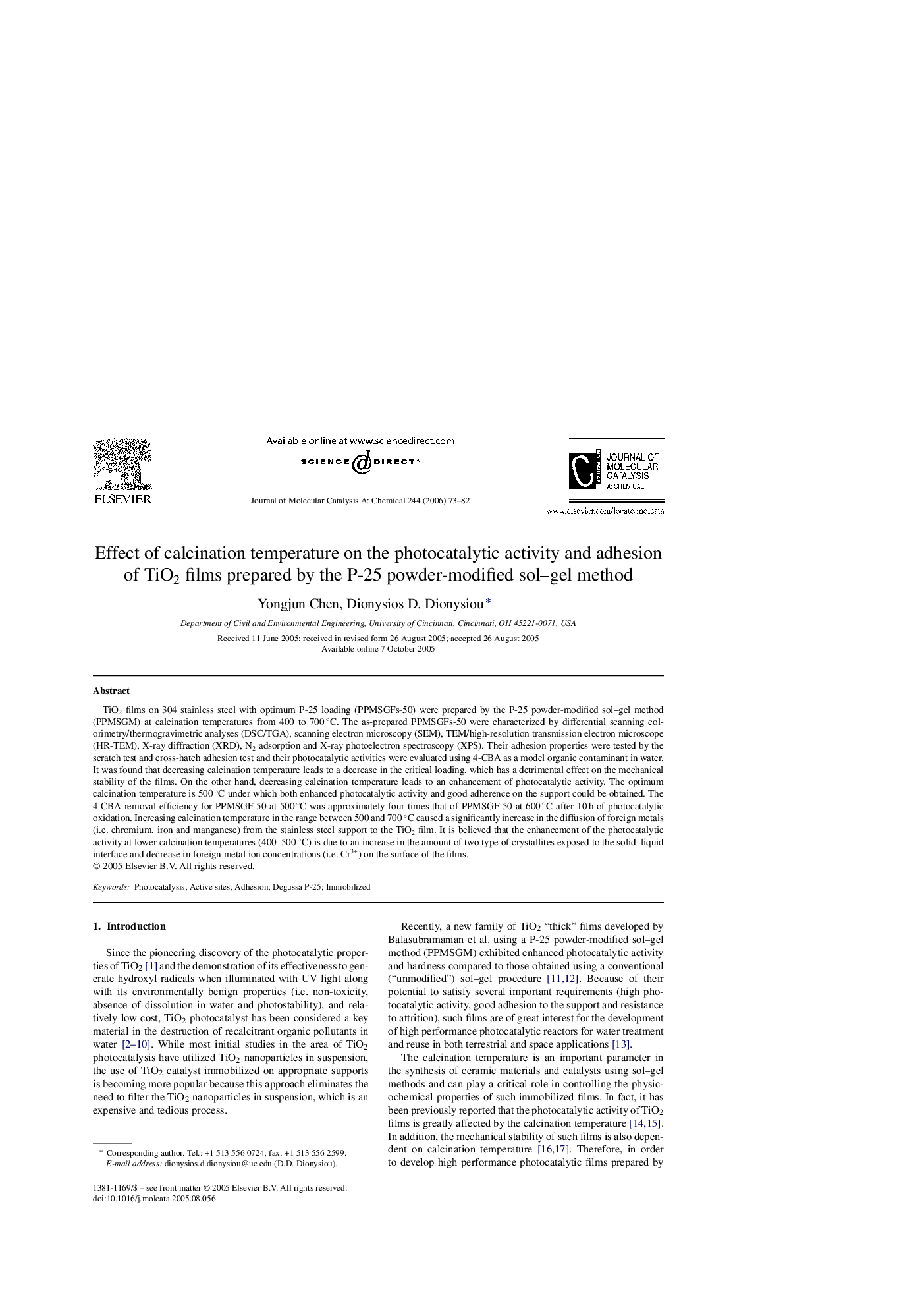| کد مقاله | کد نشریه | سال انتشار | مقاله انگلیسی | نسخه تمام متن |
|---|---|---|---|---|
| 69096 | 48530 | 2006 | 10 صفحه PDF | دانلود رایگان |

TiO2 films on 304 stainless steel with optimum P-25 loading (PPMSGFs-50) were prepared by the P-25 powder-modified sol–gel method (PPMSGM) at calcination temperatures from 400 to 700 °C. The as-prepared PPMSGFs-50 were characterized by differential scanning colorimetry/thermogravimetric analyses (DSC/TGA), scanning electron microscopy (SEM), TEM/high-resolution transmission electron microscope (HR-TEM), X-ray diffraction (XRD), N2 adsorption and X-ray photoelectron spectroscopy (XPS). Their adhesion properties were tested by the scratch test and cross-hatch adhesion test and their photocatalytic activities were evaluated using 4-CBA as a model organic contaminant in water. It was found that decreasing calcination temperature leads to a decrease in the critical loading, which has a detrimental effect on the mechanical stability of the films. On the other hand, decreasing calcination temperature leads to an enhancement of photocatalytic activity. The optimum calcination temperature is 500 °C under which both enhanced photocatalytic activity and good adherence on the support could be obtained. The 4-CBA removal efficiency for PPMSGF-50 at 500 °C was approximately four times that of PPMSGF-50 at 600 °C after 10 h of photocatalytic oxidation. Increasing calcination temperature in the range between 500 and 700 °C caused a significantly increase in the diffusion of foreign metals (i.e. chromium, iron and manganese) from the stainless steel support to the TiO2 film. It is believed that the enhancement of the photocatalytic activity at lower calcination temperatures (400–500 °C) is due to an increase in the amount of two type of crystallites exposed to the solid–liquid interface and decrease in foreign metal ion concentrations (i.e. Cr3+) on the surface of the films.
The effect of calcination temperature on structure, adhesion and photocatalytic activity of immobilized TiO2 films (PPMSGFs-50) prepared by the P-25 powder-modified sol–gel method are investigated in detail. The optimum calcination temperature was found to be 500 °C, which results in enhanced photocatalytic activity, good adhesion to the support and decrease in the surface concentration of foreign metal ions (i.e. Cr3+). Photocatalytic degradation of 4-CBA contaminant in water is shown in the figure below. Conditions of the photocatalytic experiments: UV 300–400 nm (peak at 365 nm), air flow 2 L/min, pH 3.0, Co (4-CBA) 48 mg/L. Figure optionsDownload as PowerPoint slide
Journal: Journal of Molecular Catalysis A: Chemical - Volume 244, Issues 1–2, 1 February 2006, Pages 73–82